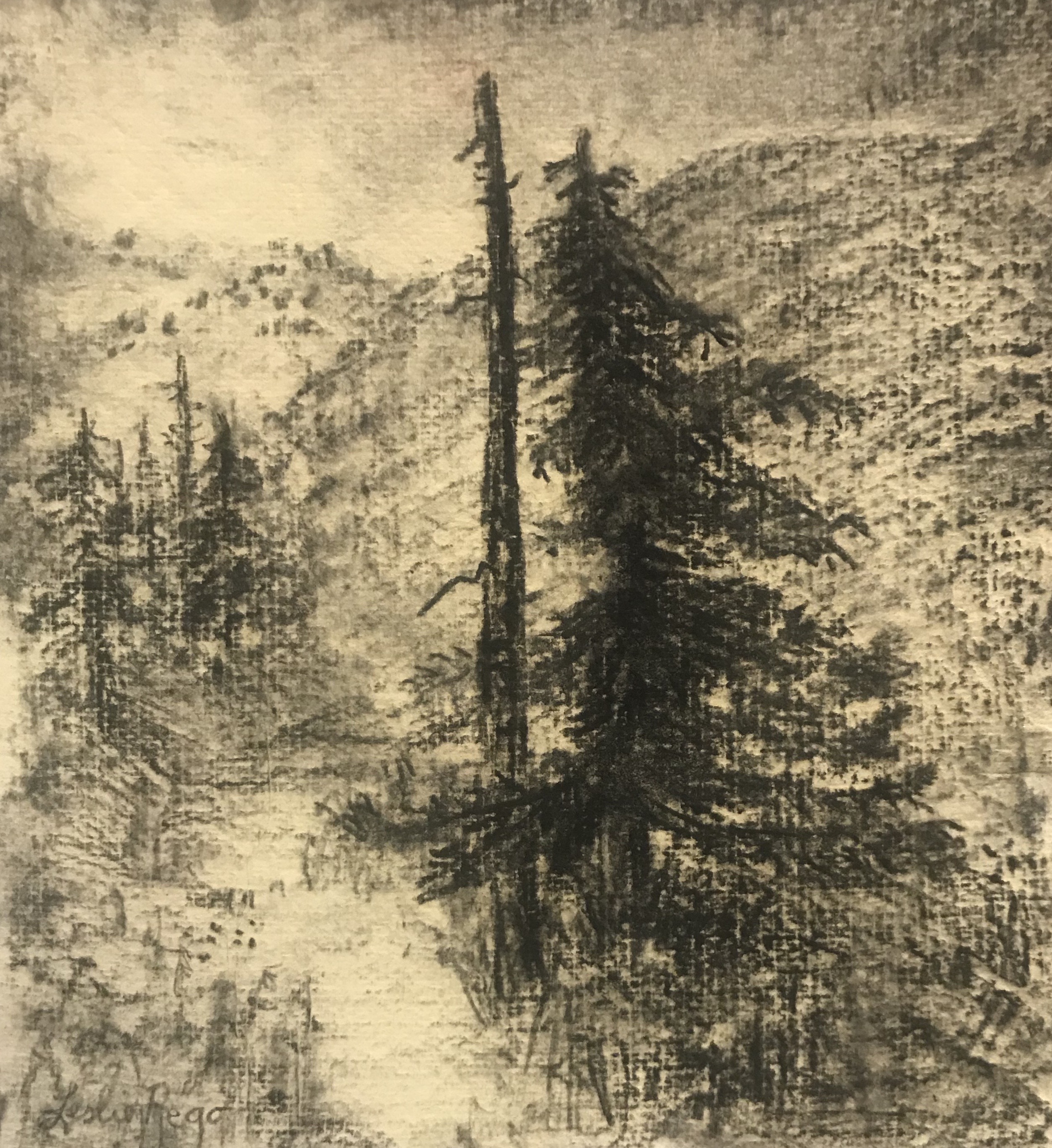BY LESLIE REGO

A few years ago I had the grand fortune to attend a museum exhibit showcasing works on paper by the French artist Theodore Rousseau (1812-1867). Included were images in charcoal, pencil, pen and ink, pastel, colored pencil, and watercolor.
Rousseau lived in a time period when oil painting reigned supreme, but his drawings were enjoyed by many as finished statements on paper, exuding deep affection for nature. Forests were represented as ancient and unchanging, transformed only by seasons and the shifting light from dawn to dusk.
I am reminded of Rousseau’s works on paper, particularly his pen and ink drawings, as I hike through the transitional period of autumn to winter. Rousseau told his biographer, Alfred Sensier, “I also heard the voices of the trees. The surprises of their movements, their variety of forms, and their singular attraction toward the light suddenly revealed to me the language of the forest. This entire world of flora lived as mutes whose signs I divined and whose passions I discovered.”
I can hear the language of the forest, the murmurs of the branches as I walk the November pathways. Skeletal trees speak the dialect of the forest. Much like Rousseau, I place myself in front of the sylvan setting to make a portrait. I study the intricate patterns and shapes. Sensier states, “no accident of limb, no ulcer, no striation would escape Rousseau. Then, after a good deal of decisive reflection, he would draw the tree in one line without revisions.”
Rousseau used every available technique to convey stratums of growth. Hatch marks, followed by erasures, and then additional mark making built the complex world of plants. He drew the broken tops of trees, utilized dots, lines, quick marks, desperate directional marks, and careful pen work. Different lengths and angles of straight and curved lines were all part of his artistic vocabulary. Rousseau depicted the forest, but then went on to portray the individual tree as a unique soul.
Visions of Rousseau’s rich technical vocabulary fill my head as I sketch. The power of the mark to portray the natural world is a common thread through the ages. It connects us to the woodland silva of the past and brings us full circle to the flora of the future.
Leslie Rego is an Idaho Press Club award-winning columnist, artist and Blaine County resident. To view more of Rego’s art, visit www.leslierego.com.


